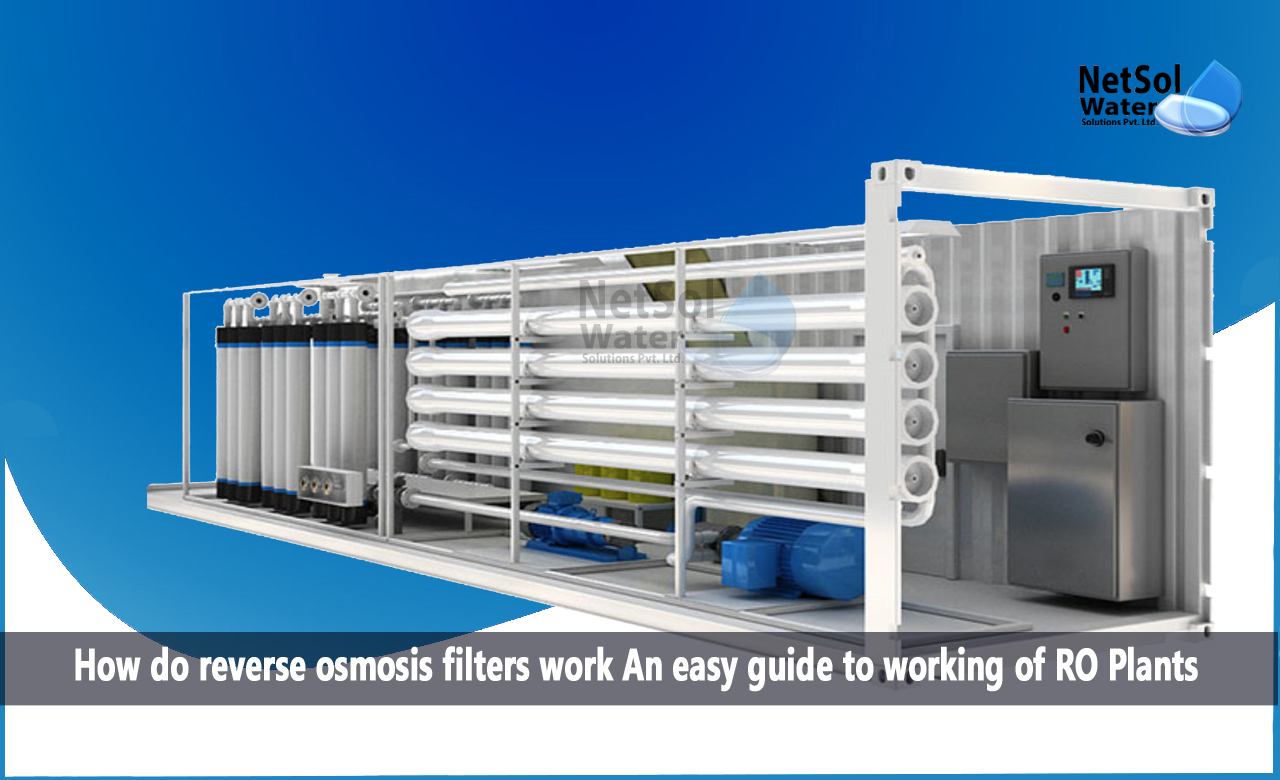In order to eliminate certain contaminants from water that are not apparent, reverse osmosis, often known as "RO," works by forcing water through an extremely thin membrane. A series of filters, primarily separated into pre-RO and post-RO filtration stages, make up reverse osmosis water purification systems.
How do reverse osmosis filters work?
Let’s look at the components of RO Plants and working of reverse osmosis filters.
· Pre-filtration stages of RO Plant
Sediment filters and carbon filters are often part of the Pre-RO filtration stage.
1: Sediment Filters remove dirt, dust, sand, and other suspended particles from your water source. It prolongs the life of the carbon filter and eliminates both fine and coarse particle contaminants.
2: The second stage of the filtration process uses a carbon filter to remove chlorine, oil, colour, and odour. Moreover, the filter eliminates hazardous pesticides and other organic pollutants.
Netsol Water Commercial RO Plants also come with a Mesh Filter to add an additional layer of filtration, before the water is transferred on to the RO membrane. Any remaining particle contaminants are further ensured to be removed by this filtration.
RO membrane: Heart of reverse osmosis process
A Commercial RO plants RO membrane is its essential component.
Following the aforementioned pre-filtration phases, water is pushed through a RO membrane. The RO membrane is a thin, semi-permeable membrane with incredibly tiny pores. Only clean water flows through the RO membrane because of its small size, which rejects all contaminants.
Woking of reverse osmosis process
Water is pressurised by the pump to the necessary pressure level so that it can pass through a RO membrane for filtration. Only clean water is forced through the membrane as a result of the high water pressure, leaving the membrane surface covered in pollutants such as dissolved salts, heavy metals, chemicals, pesticides, and microorganisms.
For areas with high (moreTDS than 300 ppm), a Commercial RO plant is especially advised, because it reduces water hardness and makes water pleasant enough to drink. It is the most efficient method for removing heavy metals and compounds like lead, mercury, arsenic, chlorine, and fluoride, among others, from water. To provide you with clean drinking water, it also eliminates microbiological impurities such as bacteria, viruses, protozoa, and cysts.
Combination of water purification techniques
In the case of RO+UV water purification, a UV filter and a Post-RO carbon filter make up the Post-RO filtration stage.
When filtered water has been passed via a RO membrane, a UV filter adds one more level of filtration. Bacteria, viruses, and parasites that may have persisted after RO filtration are eliminated by UV filtration.
Post-RO Carbon Filter
Typically, this is the final stage of filtration. It further improves the flavour of purified water and serves as a last filter and polisher. In order to ensure that water is cleaned not just once, but also three times, Netsol’s Commercial RO Plants also include a Micro-Filtration membrane as a post-RO and UV stage.
Together, these processes make up our advanced Commercial RO Plants, which guarantees that your drinking water is completely free of pollutants.
We provide water that is safe and healthy!
Our commercial RO Plants also require less maintenance. With cutting-edge water filtration technology, purchase the best RO plants from us. These are ISO certified, BIS approved, and in high demand in the water treatment sector, due to their ability to convert untreated, contaminated water into usable and pure water.
To guarantee you get the most out of your equipment, we also offer installation, training, commissioning, and support. For further information or to make a product purchase, contact us at +91-9650608473 or drop a mail at enquiry@netsolwater.com



